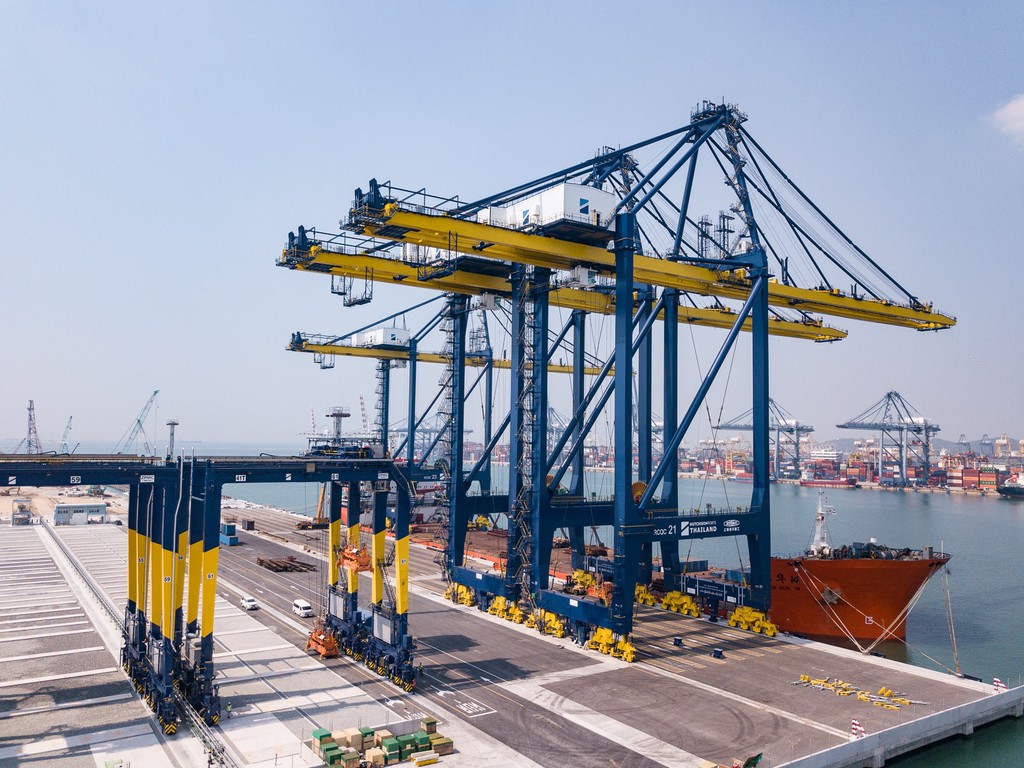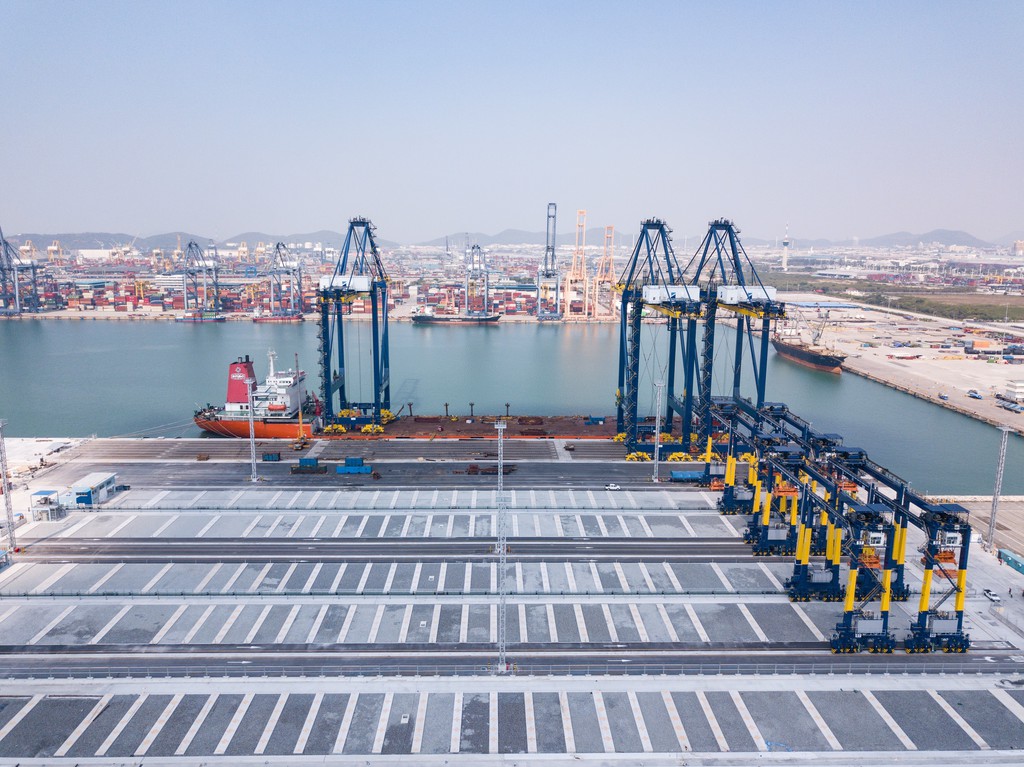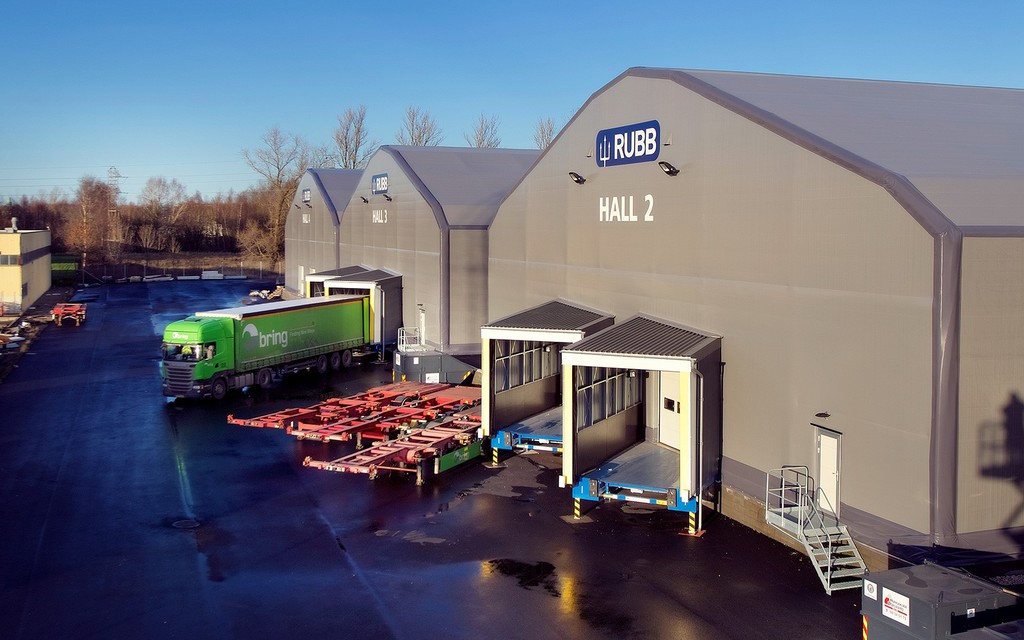

|
Edward Lowton
Editor |


|
Ports on board with the latest technologies
22 May 2018
As an island nation, it’s no surprise that the UK relies on its ports to trade with the rest of the world. Charlotte Stonestreet takes a look at the types of technology that lie behind this highly successful sector
According to the Department of Transport’s UK Port Freight Statistics, around 95% of all goods entering and leaving the UK are moved by sea. Little wonder then that the sector contributes £1.7 billion to the UK economy, a figure that is estimated to jump to £5.4 billion per annum once indirect economic factors such as supply chains and the effect of employees of ports and their suppliers spending earnings in the wider economy are considered. When shipping and ship building - activities which rely heavily on ports - are included, this figure rises even more to £7.6 billion.
The recent Transport infrastructure for our global future: a study of England's port connectivity asserts that the English port sector is one of the largest and most
dynamic port sectors in Europe which, as well as handling freight, also facilitates17 million international passenger journeys each year, with Dover alone
accounting for 12 million of these journeys. And this contribution to facilitating trade and passengers as well as driving economic growth is only likely to increase. Indeed, previous forecasts for government predict container traffic will grow by 178% (in terms of twenty foot equivalent units (TEU)) and bulk traffic will increase by 8% over the same time period from 2004-2030, with total port tonnage for the UK forecast to grow by 37%.
As identified in the study, successful ports also attract other businesses to locate nearby: either directly on the port site by having suitable industrial and commercial land available for use and/or development; or by being attractive to linked industries, who benefit from short journeys between their site and the port, and also from the port’s hinterland connections. For example, there are clusters of industries such as logistics, distribution, warehousing, heavy industry, manufacturing and internationally trading firms, operating on or near ports. In particular, in the North of England there is a distinct clustering of advanced manufacturing near northern ports.
The retail and logistics sectors also benefit by a clustering on or around ports – an activity known as port-centric distribution – where the close location allows for swift
processing of cargoes for distribution. Clustering also removes a leg from supply chains where the goods would otherwise have travelled inland for processing. This is better for overall congestion levels and the environment, but not necessarily in the immediate port hinterlands where traffic is initially focussed.
Connectivity
While Transport infrastructure for our global future: a study of England's port connectivity refers primarily to national transport networks, it is clear that digital connectivity is also of growing significance in the port sector. Reflecting this, leader in Kinetic Mesh networks, Rajant Corporation, used the Container Terminal Automation Conference 2018 to highlight its mission-critical connectivity capabilities in the control of moving port assets and driving autonomous applications.

With the charge toward automation and the unrelenting need for a constant flow of goods, Rajant looked at how to successfully manage and eradicate risks such as security, interference and hindered reliability in seaport and terminal environments.
A recognised expert for mission-critical networks in challenging industrial markets, Rajant CEO Robert Schena highlighted the correlation between data security and the quality of the network during his keynote speech, when he addressed industry leaders in a talk titled, ‘How important is your data to you'.
“Ports are using technology to create better situational awareness, reduce losses and damage, and provide a speedy first response when security issues do occur,” Schena commented. “With seaports from Abu Dhabi to Louisiana implementing drones and IP video surveillance devices, the number of interconnected devices, cameras and sensors is fast-growing, but this also increases the need to secure and authenticate the communication traffic moving in, out and around the network.”

Schena explained how, while many are realising the importance of selecting wireless over fixed networks, traditional Wi-Fi networks and LTE suffer from limitations and connectivity challenges which can create several risks. In the event of loss of communication, even for a few microseconds, data sent from personnel or port equipment would be at best delayed, but often completely lost.
Rajant Kinetic Mesh networks, said to be the only fully mobile and mission-critical network on the market today, uses InstaMesh in concert with BreadCrumb nodes to dynamically make peer-to-peer connections, leveraging multi-frequency radios. These wireless nodes can be interchangeably fixed or mobile, and dynamically adapt to self-optimize as environmental conditions change, providing a highly reliable and secure network with no single point of failure. By deploying Rajant’s ruggedised multi-radio BreadCrumb nodes, equipped with InstaMesh networking software, directly onto a port asset – be it a vehicle, quay crane, camera pole or drone – it essentially turns the asset into a network node.
Digital solutions
With its recently launched digital application, Pronto, the Port of Rotterdam Authority is looking to improve efficiency for the 30,000 vessels that call on Rotterdam every year by cutting waiting time by an average of 20 percent. The application enables more effective utilisation of capacity at the port terminals, as well as the precise planning and coordination of a range of vessel services, including bunkering, servicing and maintenance and provisioning. In addition, Pronto directly contributes to the reduction of CO2 emissions in the port.

“Pronto is a good example of how the Port Authority uses new digital solutions to raise the efficiency of processes in the port,” says Port Authority CFO Paul Smits, whose responsibilities include digitalisation, one of the organisation’s strategic spearheads. “Pronto is based on international standards and offers shipping companies, agents, service providers and operators a joint platform for the exchange of port call-related information. The application allows all users to optimally plan, execute and monitor activities throughout the entire port call. This yields concrete benefits for all parties involved. The uniform mutual exchange of standardised data allows port calls to be planned more effectively and efficiently and rounded off in a shorter period of time.

“Pronto was extensively tested over the past year during the development phase. We will now be making it available to members of the port community – either in exchange for data or for a fee. In the period ahead, we will be further developing the application and adding a number of new features. We expect more and more terminals in the port to start using Pronto, which in turn will increase the accuracy of the data it generates.”

Smart safety
At the 3rd International Congress of Safety in Ports, held in A Coruña, Spain, Siport21 presented a smart system, aimed at improving decision making related to the access and/or the operation of vessels at port.
This smart system for the evaluation and control of maritime safety at terminals is a tool for the optimisation of ship operations, in particular, LNG (liquified natural gas) terminals. The tool is also intended to improve the control of operational limits, increase the port capacity, define the tug requirements and aids of navigation, and optimise the development of new infrastructures.
The system is based on the improved management of ship operations and safety both in the nautical access to ports and specialised terminals and during the stay and operation of ships at berth, including additional tug assistance or response to oil spills.

The company presented a partial implementation in order to characterise the behaviour of moored ships in the Outer Port of A Coruña. In order to achieve this a sophisticated GPS RTK system was used to measure the motions of moored vessels under the action of waves and wind in six degrees of freedom with a high degree of accuracy. This equipment was developed by Siport21.
The company is working to apply this system on a global level in several ports, both national and international.
Harbour cranes
Konecranes has been selected to supply two Gottwald Model 5 Mobile Harbour Cranes for the Port of Dover’s new cargo facilities as part of the Dover Western Docks Revival (DWDR) development.
The eco-efficient diesel-electric Model 5 mobile harbour cranes will handle mainly containers and palletised fruit at Port of Dover’s new multi-purpose refrigerated cargo terminal, which is scheduled to open in the first quarter of 2019. The cranes will operate with hybrid drive technology to maximise fuel economy, reduce exhaust emissions and help the Port create a quieter operating environment.
Dave Herrod, DWDR programme director at the Port of Dover, said: “The new multi-purpose cargo terminal and the ongoing transformation of the Western Docks are perfectly placed to take European logistics to the next level and give businesses a competitive edge. We have opted once more for versatile cranes to help us meet the future demands of the business and deliver a rapid turnaround for a new generation Port of Dover customers.”

The terminal will be served by completely new marine and land infrastructure including two deep-water cargo berths.
Neil Griffiths, regional sales & service director, Konecranes Port Solutions, explains: “UK ports are currently investing in new and more powerful quayside handling equipment to meet ever changing market demands. We are pleased that one of the leading ports has again opted for Konecranes.”
The Model 5 mobile harbour cranes in the G HMK 5506 two-rope variant provide a strong lifting profile with a maximum lifting capacity of 125 t, and an outreach of up to 51 m.
Remote control
Hutchison Ports Thailand, the largest container terminal operator in Thailand, is expanding its handling capacity with the development of Terminal D in Laem Chabang Port.
It has received three super post-panamax quay cranes – among the world’s largest of this type – and eight electric rubber tyred gantry cranes and from Shanghai Zhenhua Heavy Industry Co (ZPMC).

Both types of cranes are equipped with advanced remote control technology and will enable Terminal D to operate safely and more efficiently, which in turn will enable the terminal to achieve higher levels of vessel and yard productivity.
The three super post-panamax quay cranes have an outreach of 24 rows are capable of handling some of the largest mega-vessels currently in operation. All Terminal D quay and yard cranes will be operated by remote control technology, making it the first terminal of its type in the world to fully install this technology for faster, more accurate and safer handling of containers.

Following the completion of Terminal D’s construction, Hutchison Ports Thailand will be able to increase its handling capacity by 3.5 million TEUs to more than 6 million TEUs, further cementing its position as the largest container terminal operator in Thailand. The arrival of the new cranes will facilitate the growth of Thailand’s container cargo volumes and help underpin the country’s modernisation aligned with the Eastern Economic Corridor (EEC) project under the Thailand 4.0 scheme.
Portside storage
FTS Eiendom in Norway is set to streamline its flow of goods and expand storage capacity with the help of Rubb fabric structures. Rubb won the order to provide four FXG insulated Thermohall structures measuring 30m (98.4ft) span x 59.25m (184.4ft) long, with 6m (19.7ft) sidewalls.

FTS Eiendom AS is a provider of a range of logistics products within shipping, forwarding, storage and distribution. FTS chose Rubb as its partner to help set up four storage halls (1800m² (19,375ft²) each). The concept includes rental of warehousing space for customers who need space near the growing import port in Fredrikstad.
In order to keep costs and rental rates down, FTS Eiendom decided not to build traditional warehouses, and selected insulated Thermohalls provided by Rubb instead. “We could have built an ‘ordinary’ steel building, but it was twice as expensive, and the rental cost per square metre had been too high,” says Jon Børresen, general manager of FTS Eiendom.
- The hidden costs of poor cleaning practices in industrial settings
- Blueshift Unveils AeroZero Lightweight and Thin Thermal Protection Tape for Enhanced Safety in Aerospace Engineering and Design
- Liquid absorption tech to prevent contamination
- Training robots to take a human approach to problem solving
- Nominations open for 2022 Pump Industry Awards
- Industry 4.0 consulting, down-under style
- Charging ahead safely: Confronting the growing risks of electric vehicle lithium-ion batteries
- Pump Industry Awards: Winners revealed
- Machine safety range added to solutions provider’s offering
- Lorien appoints duo of directors
- No related articles listed

















